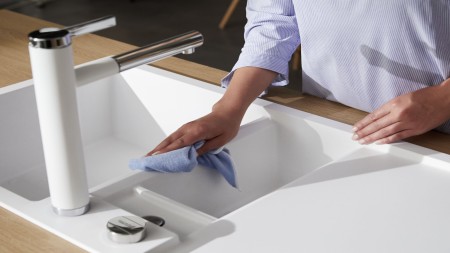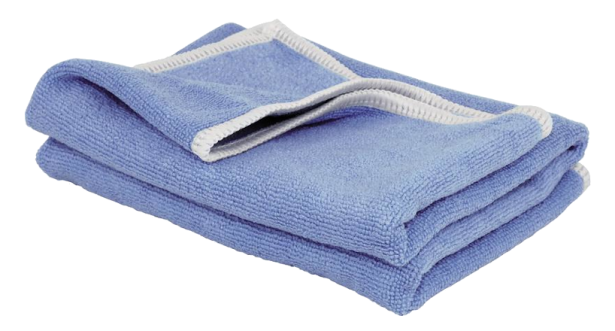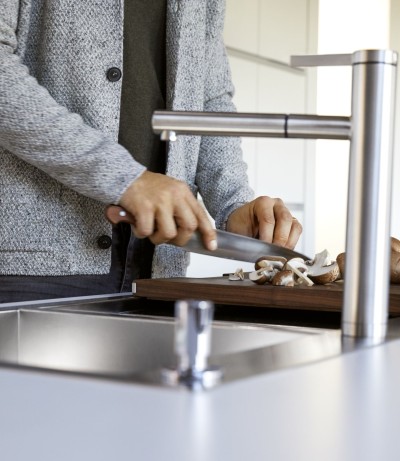Silgranit sinks are extremely hard and resistant. This means that looking after them is really very simple. Nevertheless, when cleaning a granite sink made of Silgranit you should be aware of a few things in order to keep enjoying the fantastic look and feel for as long as possible. This care guide provides advice on how best to clean Silgranit, from daily care to deep cleaning and removing stains.
The material Silgranit is very easy to clean. This can be divided into quick daily cleaning and deep cleaning at longer intervals. In general, the following applies: With regular care, you need to clean less. For quick daily cleaning, all you need is a sponge with some dishwashing liquid. Wipe your sink clean with circular motions. Use the soft side of the sponge for this to avoid scratches. Then rinse with water and rub dry with a microfiber towel.
If limescale has built up, use our BLANCO DailyClean+ cleaner. Spray the affected sink area or faucet and let it sit for a moment. Then wipe with a damp cloth and dry with a microfiber cloth.


















